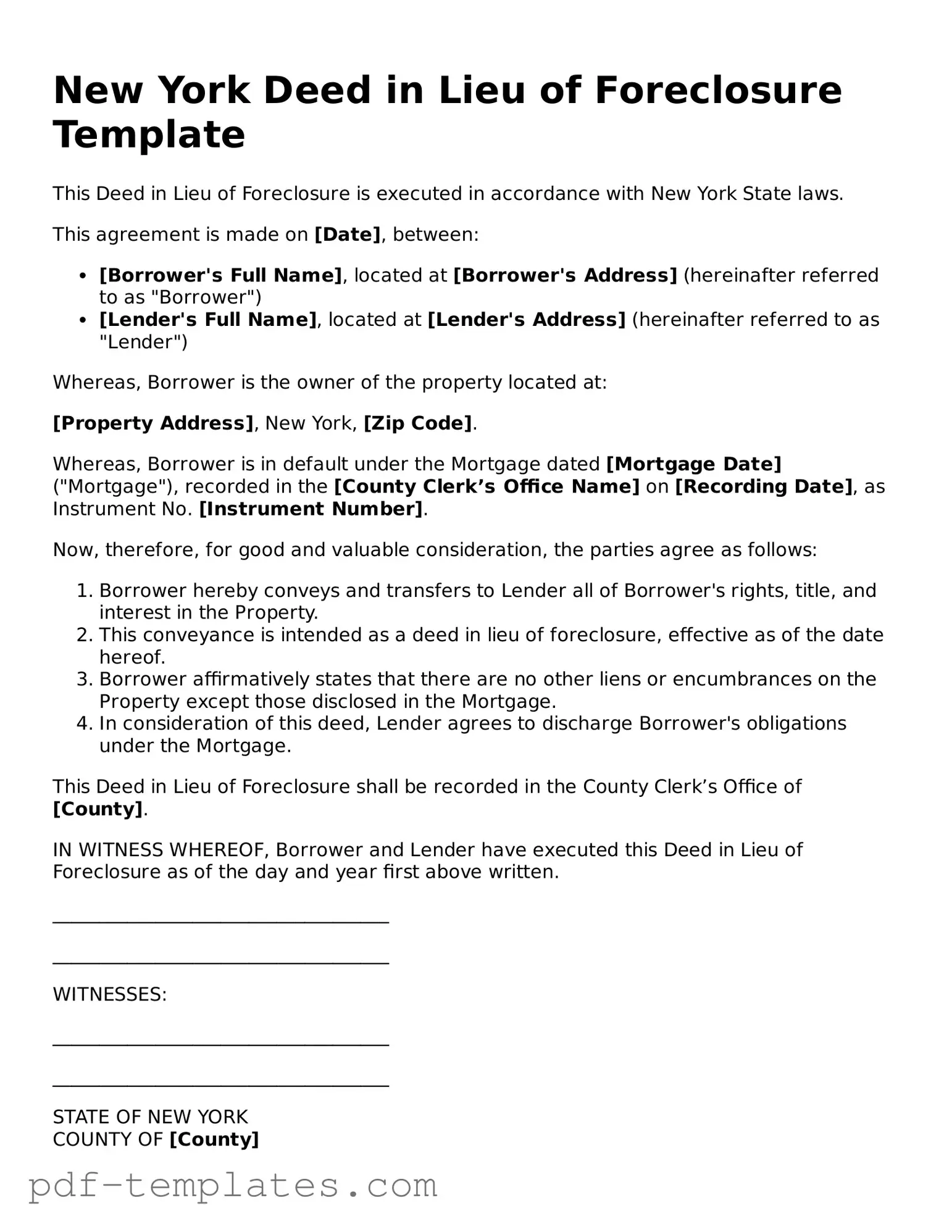A short sale agreement is a document that allows a homeowner to sell their property for less than the amount owed on the mortgage, with the lender's approval. Similar to a deed in lieu of foreclosure, a short sale helps the homeowner avoid foreclosure and the negative consequences that come with it. Both options require the lender's consent and aim to minimize losses for all parties involved. However, in a short sale, the homeowner remains in possession of the property until the sale is completed, whereas a deed in lieu transfers ownership immediately to the lender.
A loan modification agreement alters the terms of an existing mortgage to make it more manageable for the borrower. This document is similar to a deed in lieu of foreclosure in that both are alternatives to foreclosure. They provide the homeowner with a chance to keep their home while addressing financial difficulties. While a deed in lieu involves transferring ownership to the lender, a loan modification allows the homeowner to retain ownership and continue making payments under revised terms.
Understanding the various alternatives to foreclosure is essential for homeowners facing financial challenges. Among these options, the California Independent Contractor Agreement can play a unique role, particularly for those seeking contractual services to help navigate their situations effectively. By defining clear terms for assistance, individuals can better manage their financial circumstances and work towards a solution. For broader access to necessary legal documents, including the Independent Contractor Agreement, please refer to All California Forms.
A forbearance agreement is a temporary arrangement between a lender and a borrower that allows the borrower to pause or reduce mortgage payments for a specified period. Like a deed in lieu of foreclosure, it serves as a way to avoid foreclosure. Both documents require the lender's approval and aim to provide relief to the borrower. However, a forbearance agreement keeps the homeowner in possession of the property, while a deed in lieu results in an immediate transfer of ownership.
A bankruptcy filing can provide relief from foreclosure by allowing a homeowner to reorganize their debts or eliminate them altogether. Similar to a deed in lieu of foreclosure, filing for bankruptcy can halt foreclosure proceedings temporarily. Both options can be seen as last-resort measures for homeowners facing financial distress. However, bankruptcy involves legal proceedings and can impact the homeowner's credit for a longer period, while a deed in lieu is a direct transfer of property ownership to the lender.
A real estate settlement statement outlines the financial details of a real estate transaction. This document is similar to a deed in lieu of foreclosure in that both involve the transfer of property and must be agreed upon by both parties. While the settlement statement details costs associated with selling or transferring property, the deed in lieu serves as a means for the homeowner to relinquish ownership to the lender, often to avoid foreclosure.
A leaseback agreement allows a homeowner to sell their property to a buyer and then lease it back from them. This document shares similarities with a deed in lieu of foreclosure, as both provide a way for the homeowner to avoid foreclosure. In a leaseback, the homeowner retains the right to live in the property after selling it, while a deed in lieu results in the homeowner losing ownership entirely, although both aim to ease financial strain.
A quitclaim deed is a legal document used to transfer interest in a property without any warranties. This document is similar to a deed in lieu of foreclosure because both involve the transfer of property rights. A quitclaim deed can be used in various situations, including when a property is being transferred to a lender as part of a deed in lieu. However, a quitclaim deed does not necessarily imply a resolution of debt, while a deed in lieu specifically addresses the homeowner's mortgage obligations.
A property settlement agreement is often used in divorce cases to divide property between spouses. This document is similar to a deed in lieu of foreclosure in that both involve the transfer of ownership rights. A property settlement agreement can help individuals avoid lengthy legal disputes, while a deed in lieu allows homeowners to resolve their mortgage issues. However, a property settlement typically arises from personal circumstances, whereas a deed in lieu is primarily financial in nature.
